-
Cloud-based biosurveillance ecosystem

The Departments of Defense and Homeland Security are developing a system which lets epidemiologists scan the planet for anomalies in human and animal disease prevalence, warn of coming pandemics, and protect soldiers and others worldwide.
-
-
Truck carrying toxic nuclear materials stolen in Mexico
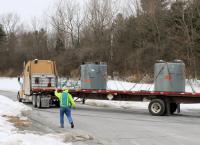
Five Mexican states have been placed on a state of alert after a truck carrying a container of dangerous radioactive material was stolen, the Mexican Interior Ministry has said. The material could cause permanent or serious injury to a person who is in contact with it for a short time, and is fatal when exposure lasts for more than a few hours.
-
-
Air data can be used to reconstruct radiological releases
New research demonstrates that experts can use data from air sampling technology to not only detect radiological releases, but to accurately quantify the magnitude and source of the release. This has applications for nuclear plant safety, as well as national security and nuclear nonproliferation monitoring.
-
-
Suicide bomb detector moves close to commercialization with Sandia engineer’s help
On the chilling list of terrorist tactics, suicide bombing is at the top. Between 1981 and 2015, an estimated 5,000 such attacks occurred in more than 40 countries, killing about 50,000 people. The global rate grew from three a year in the 1980s to one a month in the 1990s to one a week from 2001 to 2003 to one a day from 2003 to 2015. R3 Technologies and a group of other small businesses are developing a way to prevent suicide attacks by detecting concealed bombs before they go off. R3 found a partner in Sandia sensor expert JR Russell who has helped bring the company’s Concealed Bomb Detector, or CBD-1000, close to commercialization over the past two years.
-
-
U.S. testing radiation therapy developed in Israel
The United States will likely begin to stock anti-radiation therapy from Pluristem Therapeutics Inc., an Israeli biotech company. The company says that the therapy can also cure nearly all people exposed to the radiation effects of nuclear weapons, “dirty” bombs, or nuclear power plants.
-
-
New sensor rivals dogs in detecting explosives
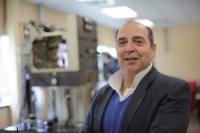
Dogs have been used for decades to sniff out explosives, but now a University of Rhode Island scientist and his team have come up with another way to detect bombs: sensors. The scientist has developed a sensor that can detect explosives commonly used by terrorists. One of these explosives is triacetone triperoxide, or TATP. Triacetone triperoxide has been used by terrorists worldwide, from the 2001 “shoe bomber” Richard Reid to the suicide bombers who attacked residents of Paris in November. The explosive is relatively easy to make with chemicals that can be bought at pharmacies and hardware stores, attracting little attention from authorities.
-
-
Nuclear forensics support law enforcement, national security investigations
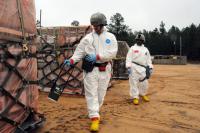
According to the IAEA, in the period from 1993 to 2013, sixteen confirmed incidents involved the unauthorized possession of HEU or plutonium. Researchers have just published an overview of nuclear forensics, including examples of key nuclear forensic signatures that have allowed investigators to elucidate the history of unknown nuclear material and describing how nuclear forensics supports law enforcement and national security investigations.
-
-
Predicting clay swelling for better nuclear waste disposal
Bentonite clay is planned to be used as a key barrier in the deep geological disposal of high-level nuclear waste. To ensure the safety of disposal, it is crucial to understand and predict the swelling behavior of bentonite clay. The swelling property, however, is regulated by multiple structural and environmental factors. A new model simulates the atomic-level interactions among the components of clay-water system, reproducing the swelling trends and swelling pressures measured by experiments with good accuracy.
-
-
ISIS may get its hands on “highly dangerous” nuclear material stolen in Iraq
Iraqi security agencies are searching for “highly dangerous” radioactive material stolen last year. Experts are worried that the material could fall into the hands of ISIS. The material – Ir-192 — is designated a Category 2 radioactive by the IAEA, and it could be used to build a “dirty bomb,” which combines nuclear material with conventional explosives to contaminate an area with radiation.
-
-
ISIS used mustard gas in Iraq: UN watchdog
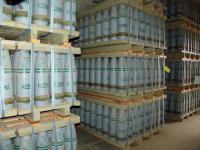
A source at the UN chemical weapons watchdog, the Organization for the Prohibition of Chemical Weapons (OPCW), said that in 2015 ISIS attacked Kurdish forces in Iraq with mustard gas. It was the first documented use of chemical weapons in the country since Saddam Hussein used chemical weapons against Kurdish civilians in 1998.
-
-
Ending civilian use of highly enriched, weapon-grade uranium
Efforts to convert civilian research reactors from weapon-grade highly enriched uranium (HEU) to low enriched uranium (LEU) fuels are taking significantly longer than anticipated, says a report from the National Academies of Sciences. The report calls for the federal government to take immediate steps to convert civilian research reactors currently using weapon-grade HEU fuel to a lower-enriched HEU fuel while awaiting the qualification of new LEU fuel.
-
-
Software helps detect nuclear tests
When North Korea conducted its recent nuclear weapon test, it was not terribly difficult to detect. It was a fairly large blast, it occurred in a place where a test was not surprising, and the North Korean government made no effort to hide it. But clandestine tests of smaller devices, perhaps by terrorist organizations or other nonstate actors, are a different story. It is those difficult-to-detect events that the Vertically Integrated Seismic Analysis (VISA) — a machine learning system — aims to find.
-
-
Specialized ORNL team uses nuclear forensics to solve mysteries, safeguard materials
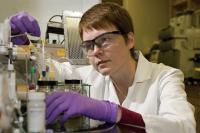
From the Manhattan Project in the 1940s to the High Flux Isotope Reactor’s 50th anniversary and its selection as an American Nuclear Society Nuclear Historic Landmark, the Department of Energy’s Oak Ridge National Laboratory (ORNL) has been the preeminent destination for nuclear R&D. A group of nuclear detectives at ORNL) takes on tough challenges, from detecting illicit uranium using isotopic “fingerprints” to investigating presidential assassination conspiracies.
-
-
Symetrica inaugurates Radioactive Threat Verification Solutions Hub
Southampton, U.K.-based Symetrica has inaugurated the company’s new Radioactive Threat Verification (RTV) Solutions Hub. The company says that the new facility will improve the company’s ability to support the global security community – including the U.K.’s Home Office and Border Force, the U.S. Department of Homeland Security, and other border protection agencies.
-
-
New X-ray method could detect nuclear materials
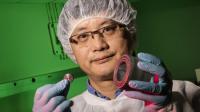
Inspectors need tools to help find nuclear materials hidden behind thick shielding or smuggled inside any of the 100 million-plus cargo containers shipped around the world each year. Uranium is perhaps the easiest nuclear material to obtain and hide. Physicists have demonstrated that their unconventional laser-based X-ray machine could provide a new defense against nuclear terrorism. The scientists used the laser-driven X-ray source to produce an image of a uranium disk no bigger than a stack of three nickels and hidden between 3-inch steel panels.
-
More headlines
The long view
Keeping the Lights on with Nuclear Waste: Radiochemistry Transforms Nuclear Waste into Strategic Materials
How UNLV radiochemistry is pioneering the future of energy in the Southwest by salvaging strategic materials from nuclear dumps –and making it safe.
Model Predicts Long-Term Effects of Nuclear Waste on Underground Disposal Systems
The simulations matched results from an underground lab experiment in Switzerland, suggesting modeling could be used to validate the safety of nuclear disposal sites.
